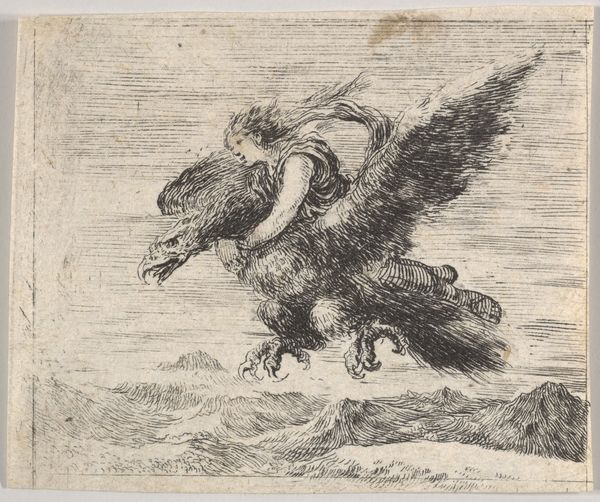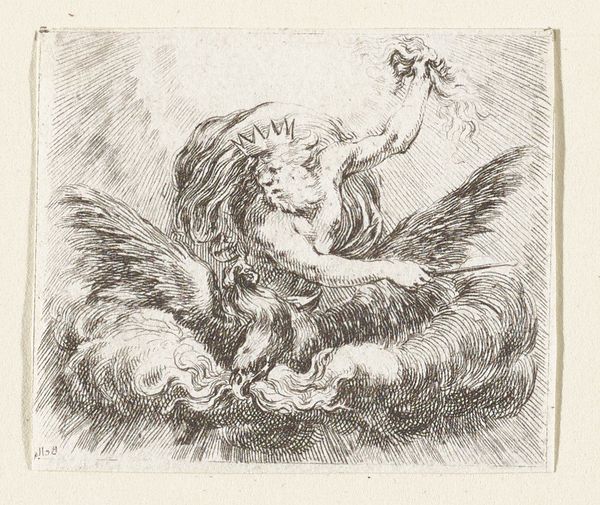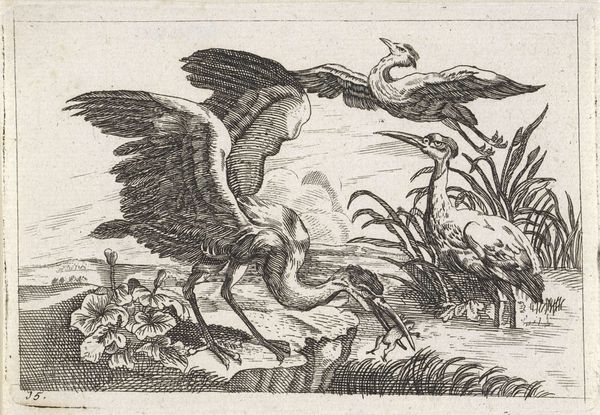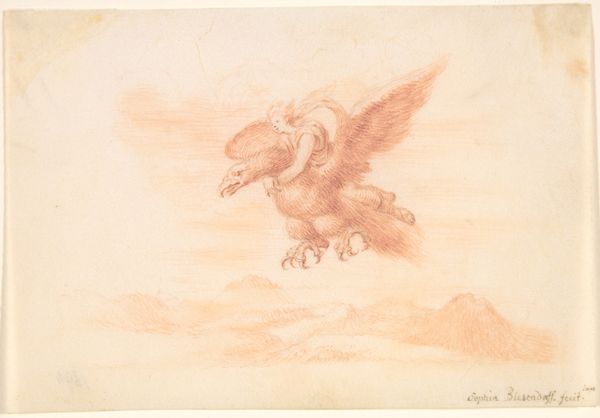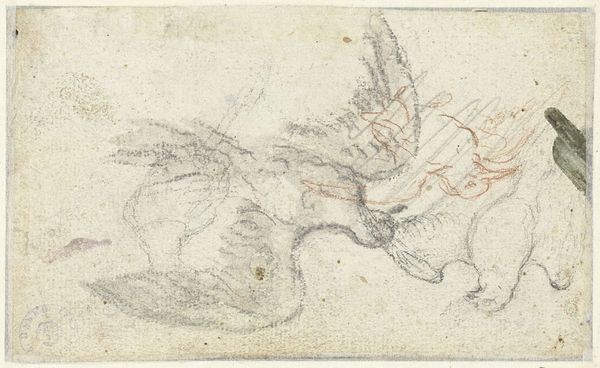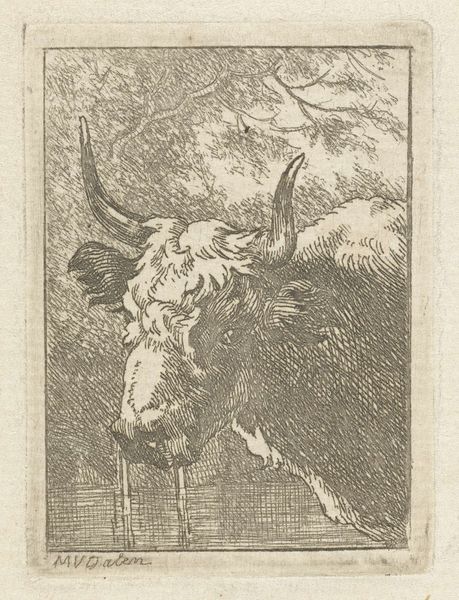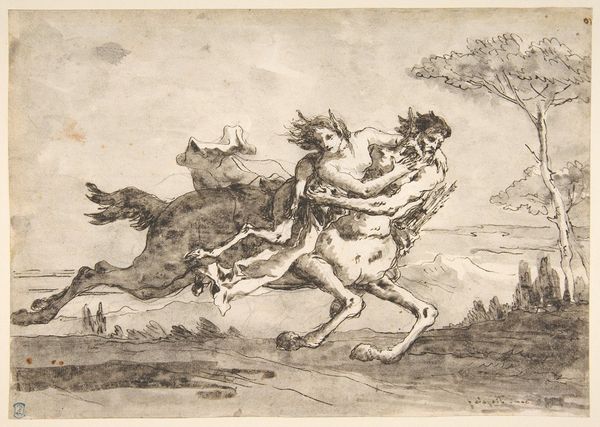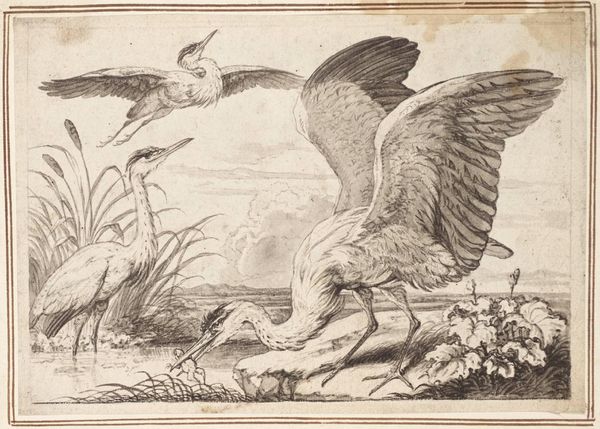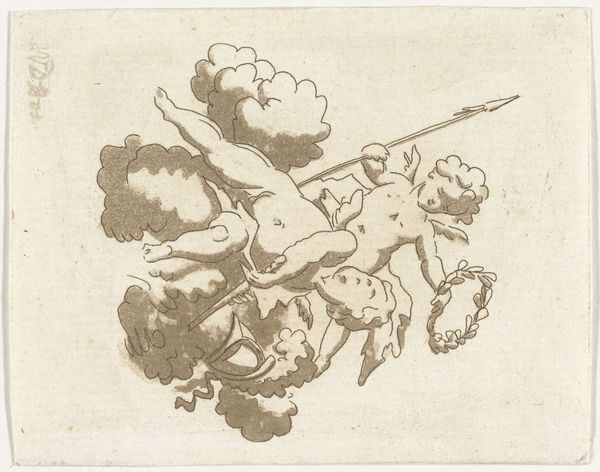
print, etching
#
narrative-art
#
baroque
# print
#
etching
#
landscape
#
etching
#
figuration
Dimensions: 1 13/16 x 2 1/16 in. (4.6 x 5.24 cm) (sheet)
Copyright: Public Domain
Editor: This is Stefano della Bella's etching, "Jupiter et Ganymede," from the 17th century. The image, rendered in fine lines, shows a figure soaring on the back of an eagle above what looks like waves or mountains. It has this incredibly dynamic feel, doesn't it? How do you interpret this work? Curator: From a historical perspective, the story of Jupiter and Ganymede was incredibly popular in the Baroque era, seen as representing divine power, beauty, and sometimes, a more contentious reading revolving around power dynamics and eroticism, given Ganymede was taken as Jupitor’s cupbearer, his lover. Editor: So the narrative itself would have resonated strongly with contemporary audiences. But what about its presence in a public institution today? Curator: Absolutely. Its presence raises interesting questions about what stories we choose to tell and how we present them. Notice the visual language: an all-powerful god in the form of an eagle, abducting a young mortal. In the 17th century, it was a reflection of the established order. Today, a museum has to consider how this narrative interacts with contemporary values and ethics. Who benefits from this type of imagery and who might be harmed? Editor: So it's not just about what the art *is*, but also about what it *does* in the present. Is there more we should examine here? Curator: The museum context, its displays, interpretive materials, and audience reception—these all contribute to how the artwork functions socially and culturally. And let's remember who typically has access to museums and whose stories are privileged within those spaces. These prints may appear straightforward but they can open up huge conversations on art’s cultural role. Editor: That’s given me a lot to consider about museums’ choices and the power of historical art. Thanks. Curator: My pleasure. Thinking about art through the lens of its cultural and political impact offers us ways to interpret its effect.
Comments
No comments
Be the first to comment and join the conversation on the ultimate creative platform.
